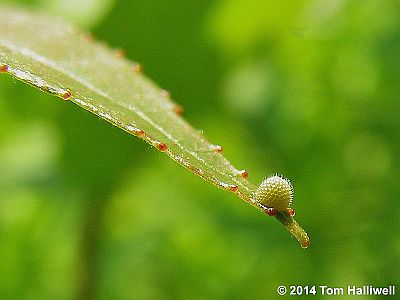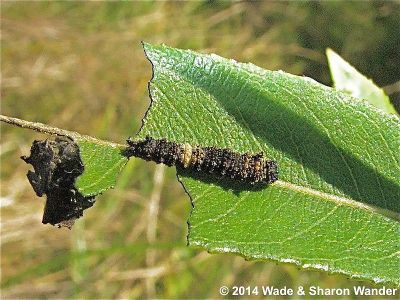New Jersey Butterfly Club
A chapter of the North American Butterfly Association (NABA)
Viceroy
Limenitis archippus
Identification: Medium—2.8” (noticeably smaller than the similar Monarch). Above: FW and HW orange with dark veins and dark, white-spotted borders. A narrow dark line arcs across the HW (this line is lacking in Monarch). Below: Similar to upper surface—FW and HW orange with dark veins and a narrow dark line arcing across the HW. Smaller than Monarch and often slightly darker (especially below), and with a more direct flight. (Monarchs tend to glide more, often with wings held in a shallow V.).
NJ Status and Distribution: Resident. Fairly common and widespread throughout in herbaceous/shrubby meadows with willows.

Habitat: Open, sunny, upland fields and wet meadows. Visits gardens with flowers such as Butterfly Bush, Purple Coneflower, asters, goldenrods, and milkweeds.
Flight Period: Two broods, flying from Mid-May into July and again from late July to October. Extreme dates: North Jersey 5/15—10/19; South Jersey 4/21—10/29.
Caterpillar Food Plants: Mainly shrub willows (Salix), as well as aspens, poplars, and cottonwoods (Populus).
Overwintering Stage: Caterpillar.
Good Locations: White Lake Natural Resource Area, Allamuchy Mountain SP (Kinney Road section), Higbee Beach WMA, Rea Farm in Cape May Point, Wheelabrator Refuge, Riverwinds Scenic Trail.
Comments: Until recently, Viceroy was thought to be an example of Batesian mimicry, whereby it gained protection from predators by looking like the unpalatable Monarch. However, since the Viceroy itself is unpalatable (because it ingests alkaloids from willows) it is a better example of Mullerian mimicry, which is a form of mutually beneficial convergence of 2 or more distasteful species whose predators learn to avoid them all.




